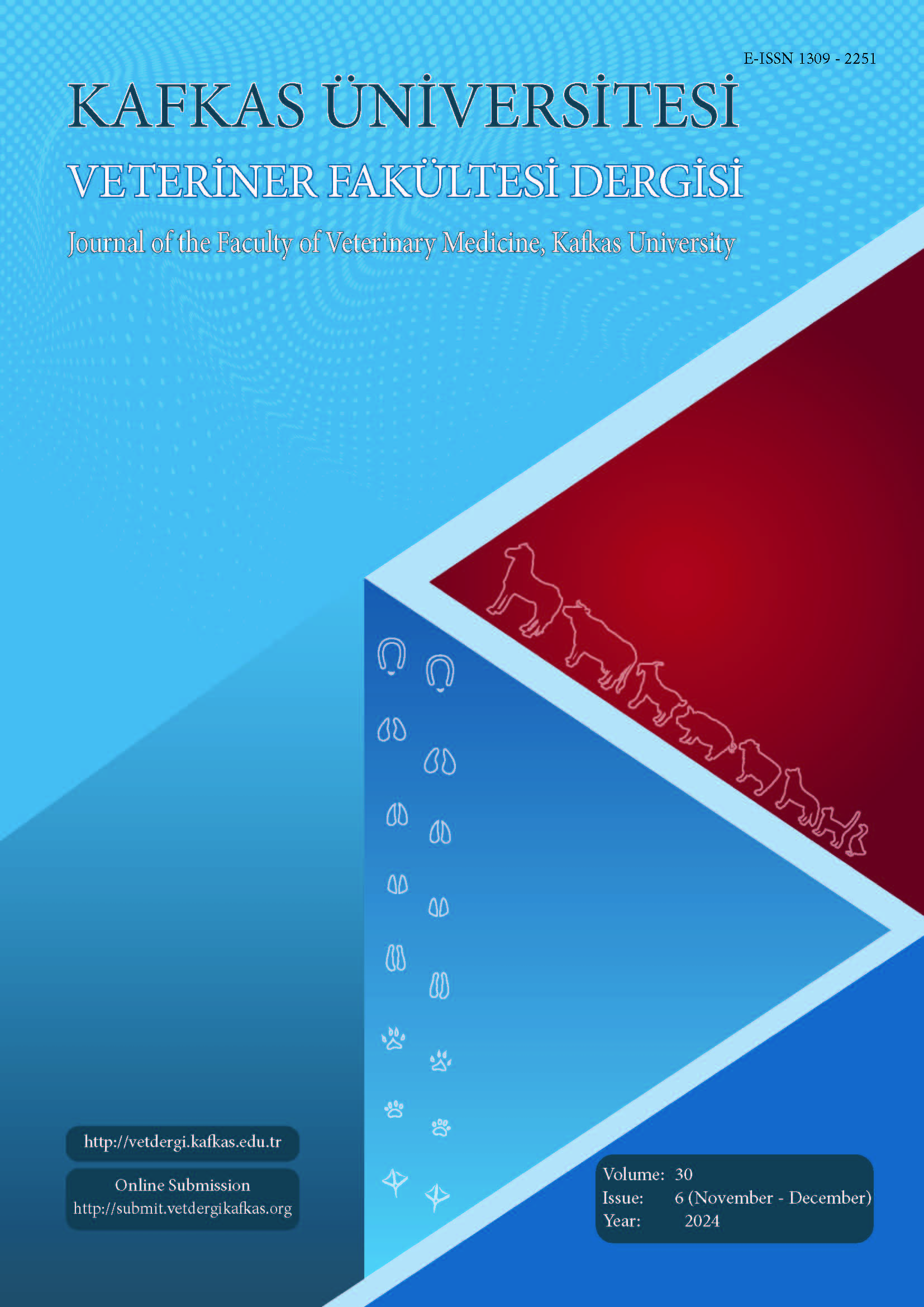
This journal is licensed under a Creative Commons Attribution-NonCommercial 4.0 International License
Kafkas Üniversitesi Veteriner Fakültesi Dergisi
2024 , Vol 30 , Issue 6
Evaluating Linum usitatissimum Seeds Extract as Potential Alternative Biochemical and Therapeutic Agent Against Induced Coccidiosis in Broiler Chicken
1Department of Pathobiology Pathobiology, Faculty of Veterinary and Animal Sciences, Muhammad Nawaz Sharif University of Agriculture, 66000, Multan, PAKISTAN2Department of Parasitology, Faculty of Veterinary Sciences, University of Agriculture, 38000, Faisalabad, PAKISTAN
3College of Veterinary and Animal Sciences, 35200, Jhang, PAKISTAN DOI : 10.9775/kvfd.2024.32618 Coccidiosis is a significant disease of poultry and is usually treated using various synthetic anticoccidial drugs. However, the effectiveness of this approach has been compromised due to drug resistance. Medicinal plants are being considered as potential alternatives to these drugs. As part of ongoing research, an investigation was conducted to assess the anticoccidial potential of Linum usitatissimum seed extract (LUE) and its impact on hematological parameters in broiler chickens with experimental coccidiosis. A total of 108 broiler chicks were divided into six groups. The chicks in Groups I, II, and III were given plant extract at three different concentrations: 4%, 5%, and 6%, respectively, at one week of age. Group IV was the positive control - these chickens were treated with toltrazuril. Group V served as the negative control, meaning they were infected but not given any medication. Group VI was the normal control group. All groups, except Group VI, were orally infected with 60,000 sporulated oocysts when they were 18 days old. After 7 days of giving orally infection, six birds from each group were euthanized so that we could examine their feed conversion ratio (FCR), oocyst score, lesion score, fecal score, serum chemistry and hematology. The results showed that the L. usitatissimum extract exhibited anticoccidial activity. It improved the FCR and reduced lesion, oocyst, fecal scores and blood and serum chemistry. Keywords : Anticoccidial, Chicken, Coccidiosis, Linum usitatissimum










